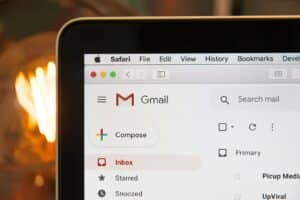Email marketing remains one of the most powerful tools for driving sales in today’s digital marketplace. A well-crafted promotional sales email can significantly boost revenue, enhance customer engagement, and solidify brand loyalty. However, writing an effective promotional email requires a fine balance of creativity, strategic thinking, and a deep understanding of the business’s audience.
A high-converting, promotional sales email must be crafted to resonate with the audience and compel prospective customers to act.
Understand the Purpose
The first crucial step before writing even begins is to define the purpose of the email. Is it to announce a limited-time sale, introduce a new product, or offer a special discount to loyal customers? Identifying the objective helps to focus the message, making it easier to craft compelling content that drives conversions.
Typical common goals for promotional emails are to:
- Increase product or service sales
- Drive traffic to a website or landing page
- Raise awareness about a new product, service, or offer
- Build brand loyalty or trust
- Reward existing customers with exclusive deals
Know the Target Audience
Every promotional email should be tailored to the needs and desires of a specific audience. A generic email is less likely to convert than a message that speaks directly to the recipient’s needs, interests, or purchasing behaviors.
Tips for audience segmentation might be:
- Demographics (age, location, gender, occupation, etc.)
- Behavioral segmentation (past purchases or engagement with previous emails)
- Customer history (first-time subscriber, known prospect, or previous customer)
Compelling Subject Line
The subject line is the gateway to an email’s success. A compelling subject line is critical to grab the recipient’s attention in a crowded inbox (that we all seem to have). It’s the first thing a recipient sees, and it will determine whether the email is opened or deleted.
Best practices for writing subjects are:
- Keep it short (typically 40-60 characters to ensure the subject line is fully visible on both desktop and mobile devices)
- Include a sense of urgency (phrases such as “Limited Time Offer” or “Ends Soon” encourage immediate action)
- Be clear and direct (avoid vague phrases that could confuse the reader)
- Use personalization (if possible, include the recipient’s name or recent purchase)
Craft a Strong Opening Line
Once a recipient opens an email, the first few sentences must capture their interest. The opening line should be concise and provide a clear introduction to the email’s topic.
Some best practices for an opening line are:
- Keep it engaging (an attention-grabbing statement or question)
- Please get to the point (so readers immediately understand what’s in it for them)
- Be conversational (use a friendly and approachable tone)
- Mention the offer early (let the reader know right away that there is a valuable offer)
Highlight Benefits
While describing a product or service’s features is important, highlighting its benefits is what truly connects with customers. Features describe what a product or service does, but benefits explain how it can solve a problem or improve the customer’s life.
How to focus on benefits:
- Identify the audience’s pain points (what problems or challenges do they face that the product or service can solve?)
- Explain the transformation (describe how the offering will solve a problem, make life easier, provide more efficiency, etc.)
- Use testimonials or reviews (allows the reader to visualize and relate)
Create a Clear Call to Action (CTA)
An email’s primary goal is to encourage the reader to take some type of action, such as making a purchase, asking for additional information, visiting a landing page, etc. A strong CTA is essential to driving conversions.
The best practices for writing effective CTAs are:
- Be specific (Clearly state what action the reader should take, such as “Shop Now” or “Claim Your Discount.”)
- Make the CTA visually prominent (use buttons or bold fonts to ensure it stands out)
- Create a sense of urgency (limited-time offers or countdowns can encourage readers to act quickly)
Test and Optimize
Even with all the right elements, an email might not be the “right one.” Testing different variations and analyzing their performance metrics can optimize promotional emails for the best results. Then, emails can be changed based on what elements best resonate with the target audience.
The usual key metrics to track are:
- Open rates (how many recipients opened the email)
- Click-through rates (CTR) (measures how many recipients clicked on the Call to Action)
- Conversion rates (shows how many recipients took the desired action)
Conclusion
Writing an effective promotional sales email is both an art and a science. By understanding the target audience, crafting compelling content, and optimizing for engagement, a business can create emails that capture attention and drive action. However, remember that too many promotional emails can be annoying and lead to recipients unsubscribing, while too few promotional emails can cause missed opportunities. Test, refine, and keep improving what is emailed out. Before long, there will be positive progress.

